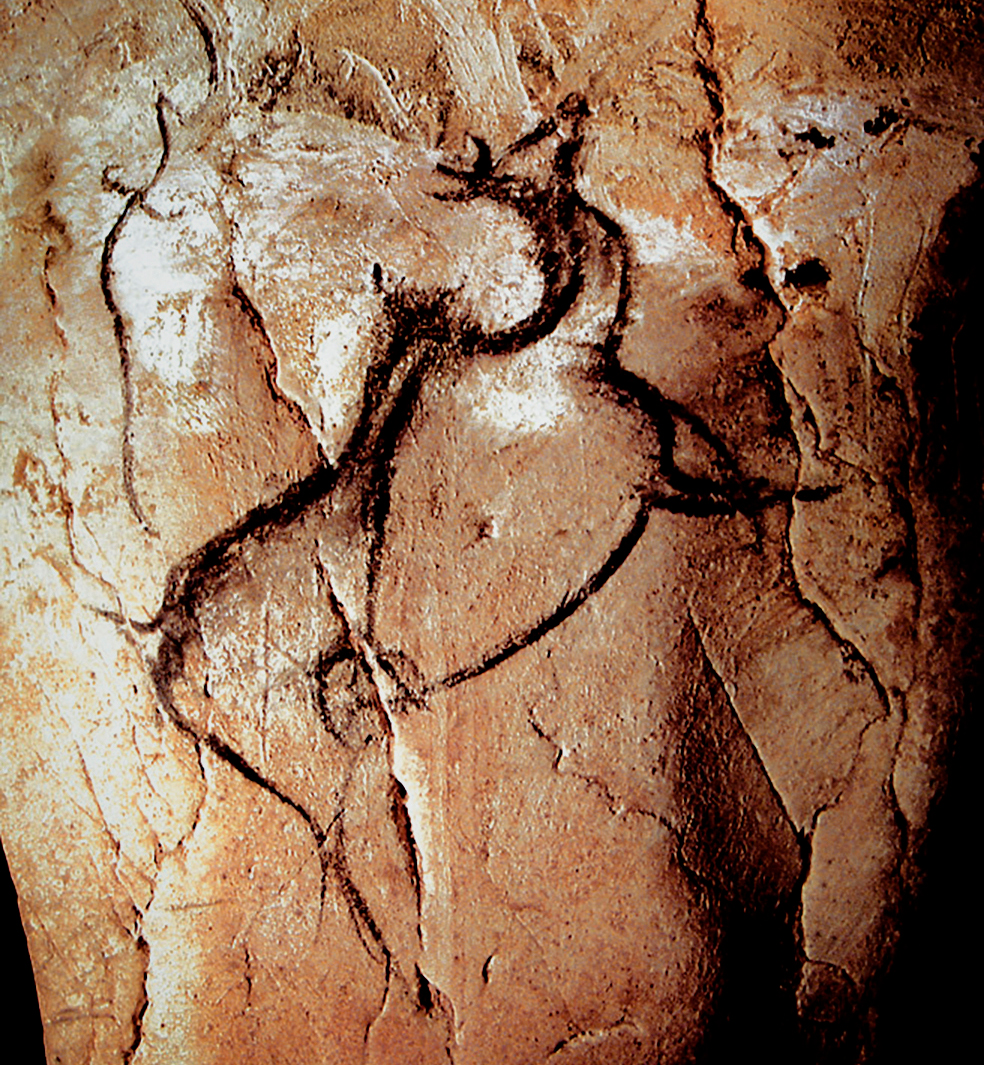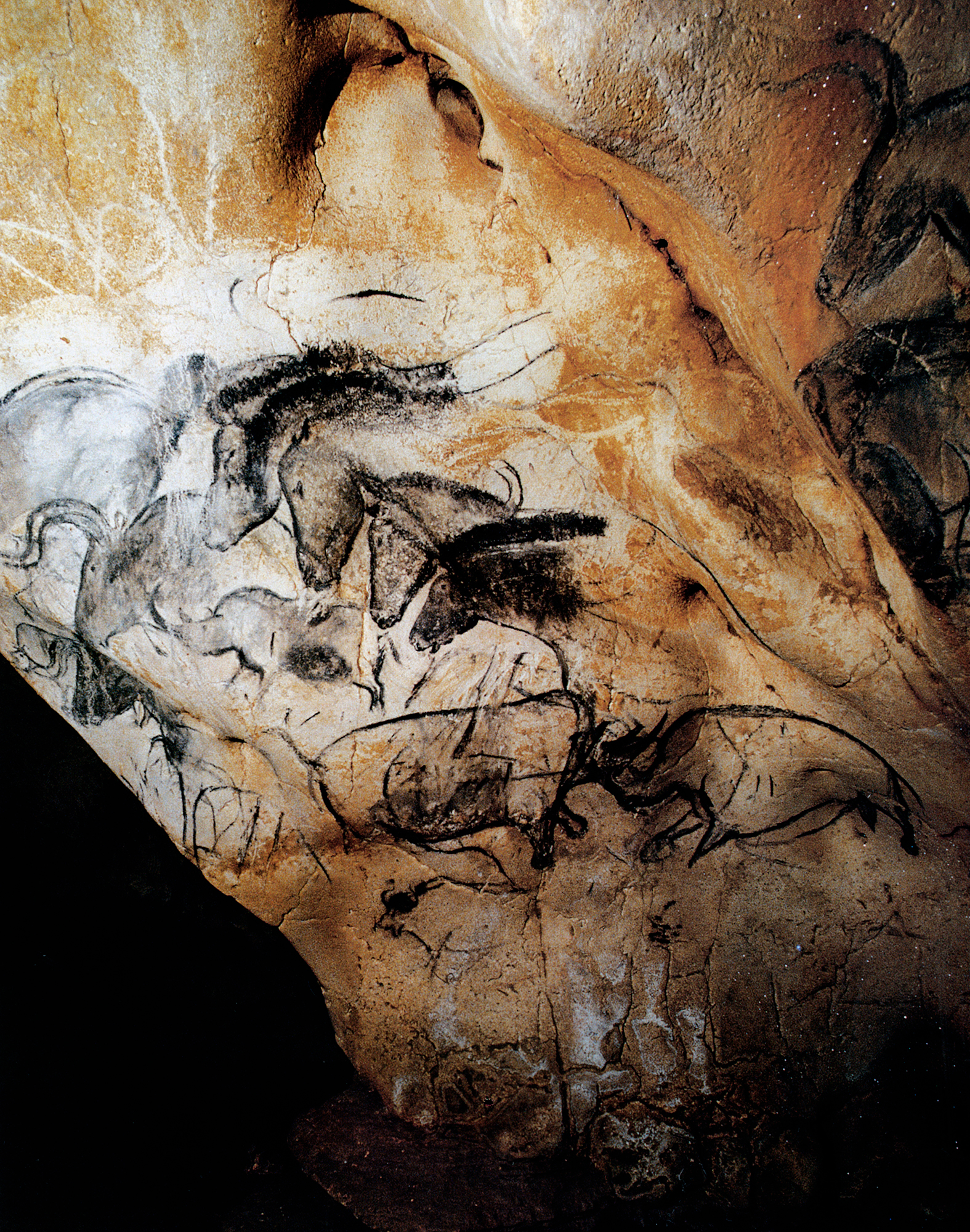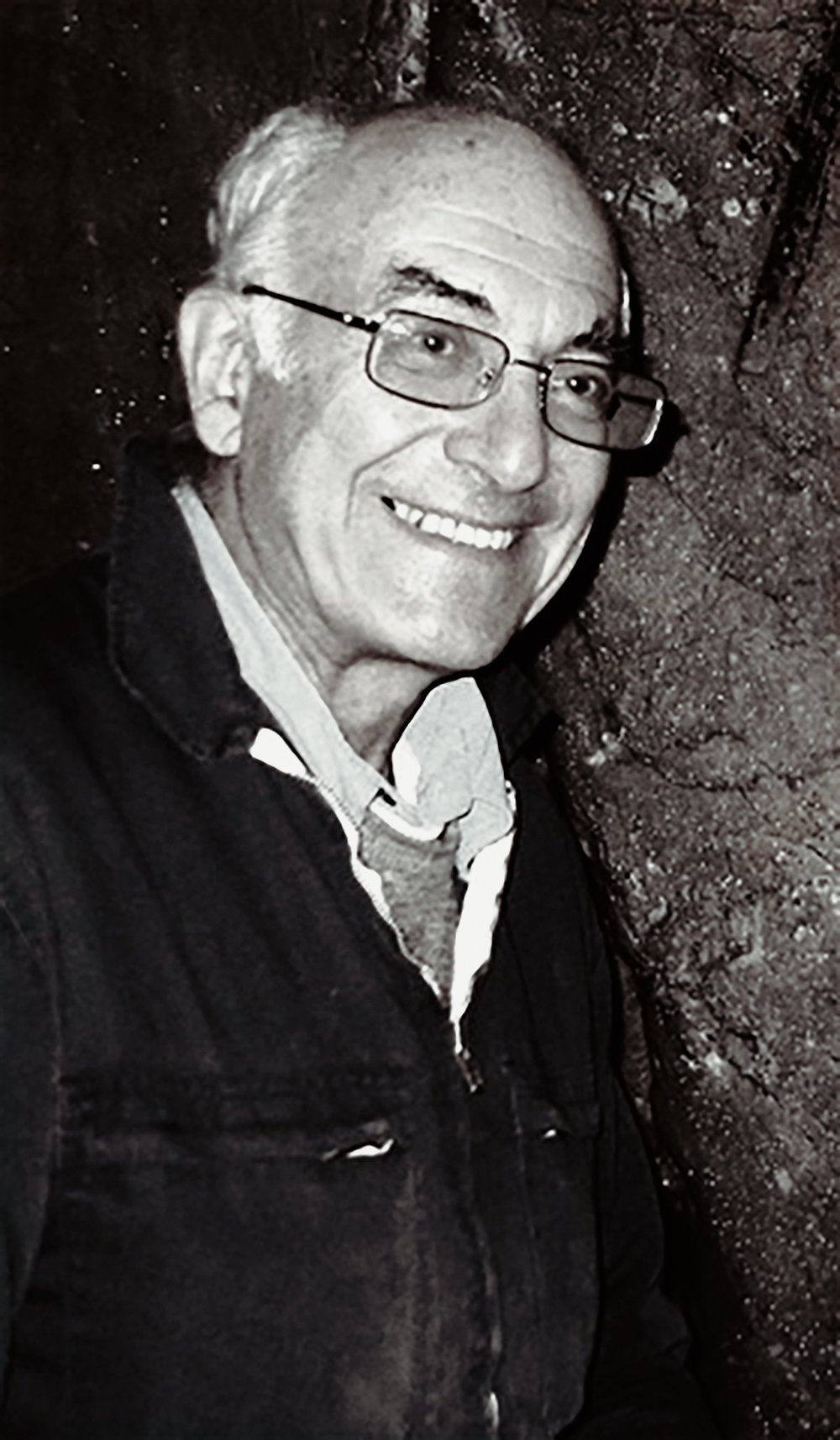Which Animal Species Were Not In The Lascuax Or Cahvuet Painting

The Chauvet Cave is one of the most famous prehistoric rock art sites in the world. Located in the Ardeche region of southern France along the bank of the river Ardeche nearly the Pont-d'Arc, this cave was only discovered every bit recently as 1994, happened upon by a small team of cavers led past Jean-Marie Chauvet. Chauvet Cave's importance is based on two factors: firstly, the aesthetic quality of these Palaeolithic cavern paintings, and secondly, their peachy age. With 1 exception, all of the cavern art paintings accept been dated between 30,000 & 33,000 years agone. In 1998, the eminent Frenchprehistorian Dr. Jean Clottes headed the beginning enquiry team in Chauvet Cave, under smashing security.
For the sometime director of prehistoric antiquities for the Midi-Pyrènèes region of France and scientific advisor on prehistoric fine art to the French Ministry of Culture, this security proved to be of vital importance - as the results of the Carbon 14 dating of the cave paintings started to emerge from the laboratories (Laboratoire des Sciences du Climat et de Environnement, Gif-sur-Yvette, France, Centre de Datation par le radiocarbon de Lyon, France, and the Inquiry Laboratory for Archaeology, Oxford, U.k.), controversy and heated debates flared upward every bit many entrenched and pre-existing conceptions were turned upside down.

The importance of understanding Chauvet in its setting and context
The fact that these cave paintings were executed so skilfully still so deep within prehistory has forced u.s. to abandon the prevailing view that 'early art was naive art'. Not only is the Ice Age art of the Chauvet Cavern extremely old, it is as well very extensive and highly varied. And 1 other cistron intrigued prehistorians around the world eagerly awaiting news from the research squad; the Chauvet Cave and its Paleolithic paintings were more or less perfectly preserved.
undreds of cave paintings of animals take been recorded, depicting at least xiii unlike species, including those which have rarely or never been found in other Ice age paintings. Rather than the more than usual animals of the hunt that predominate in Palaeolithic cave art, such equally horses, cattle and reindeer, the walls of the Chauvet Cave are covered with predatory animals - lions, panthers, bears, owls, rhinos and hyenas.
As one would expect, in that location are no man figures, except at the very end of the lowest and farthest gallery in the Chauvet cave system, where in that location appears to be a female figurine - the legs and genitals of a woman - attracting the attention of the one other human figure - the lower body of a human with the upper body of a bison, now referred to as 'The Sorcerer'.
The Worlds'south Oldest Cave Art Paintings?
The Chauvet-Pont-d'Arc Cave
With such a cave as Chauvet, there is the danger of treating information technology as a carve up and sanitised unit. Dr Jean Clottes is bang-up to emphasize that a decorated cave, whatever its importance, can only be understood in its particular setting and context. Information technology is located in a landscape whose characteristics influenced the means of life and the beliefs of Palaeolithic people. Indeed, its fine art originates in the myths and practices of these people.

The cave paintings of Chauvet stand for a practice that existed for an extremely long period of time, simply it is an art-form that tin can never be recreated
Just in another sense, a sanitised unit it must exist. Chauvet has been locked down. It is equally secure as Kentucky'south Fort Knox. More people take been to the summit of Mountain Everest than within Chauvet Cave. The steel door at the entrance, the airlocks, and the steel gantries to protect the floor are there to protect. For Chauvet, this is more preservation than conservation. Jean Clottes is emphatic; Palaeolithic cave paintings represent a practice that existed for an extremely long period of time, but it is an art-form that tin can never be recreated, even though the artists were our ancestors, and we await similar they would accept looked, and nosotros share the same size brains.
This cave art was based upon and rooted in a cultural experience - an overall belief arrangement which persisted with little change for over twenty millennia, ending only when the Ice Age finally drew to a close - which is plainly totally alien to the 1 that the bulk of the states live in today. Because Chauvet was institute intact, a major priority for Jean Clottes' scientific team was to avoid the situation painfully learnt at Lascaux
In a circuitous of caves in the Dordogne region of southwestern France, the cave paintings of Lascaux are estimated to be upward to 20,000 years old, consisting primarily of large animals, once native to the region. However, since the year 2000, Lascaux has been beset with a fungus, variously blamed on a new air conditioning arrangement that was installed in the caves, the utilize of high-powered lights, and the presence of too many visitors. As of 2006, the situation became even graver - the cave saw the growth of blackness mold. In January 2008, regime closed the cavern for three months, fifty-fifty to scientists and preservationists. A single individual was allowed to enter the cave for xx minutes once a calendar week to monitor climatic conditions. Fortunately, the Lascaux Cave Paintings Symposium held in Paris in 2009 has secured the future of Lascaux.
The Bradshaw Foundation'south part to notice, document and protect ancient rock fine art, cave paintings and rock engravings around the globe demonstrates the range of protection that is both available and possible, falling somewhere between 'preservation' and 'conservation'. From the tight security of Chauvet to the guided tours of Niaux Cave. From the on-site Tuareg guide at the giraffe carvings of Dabous to the controlled access of the Yinchuan Globe Rock Art Museum and Preservation Park at Helankou in Inner Mongolia.

And what of the meaning of the cavern paintings? The problem is when the culture and its stories and traditions responsible for the art have long since disappeared. On the other hand, in ' Globe Rock Art ' [2002] Jean Clottes explains other hazards of interpretation:
'In instances where these traditions survive, we accept no mode of knowing, when native informants elucidate an prototype for us, whether the art really means what they say it means. Their understanding tin be influenced by various factors - by their gender or condition, for example; and they may modify their caption of the art when speaking to outsiders deemed unqualified to share meanings so sacred or undercover. And when dealing with fine art for which no ethnological data are known, our predicament is worse even so. What appears obvious may not exist obvious at all. Does a painting of a bird depict an eagle, a supernatural spirit, or a shaman whose soul has taken flight? Is a bear really a bear, or a human transformed?'
'Some archaeologists think that it is impossible to know what rock art means and that the researcher's role is to study motifs and techniques, try to date the works, establish every bit far as possible whether these images were structurally linked, but not endeavor to interpret them. From their point of view, we are faced with a choice: either say zero at all most meaning, or make upward stories that might seem interesting but would lack any objective, scientific ground.'
'Others feel that it is a pointless exercise to pursue classifications that lead merely to dry statistics, or to institute the being of full general structures - relationships amid different types of images - that nosotros tin perhaps record simply not explain. They are right. Faced with the twin dangers of pursuing an arid intellectual exercise, on the one manus, and indulging in baseless fabrications, on the other, we must steer a careful course. In doing so, in spite of the undeniable difficulties we might face, there are ways to arroyo the report of significant in a rigorous and scholarly way.'
World rock art clearly has a multiplicity of meanings. The art may be the affirmation of a presence, marker natural borders and traditional territory, such as the rock art of Helankou in Mainland china. The art may be a testimony, to a belief or a practice, such every bit cosmos myths and initiation ceremonies, such every bit the Bradshaw paintings or the Coso petroglyphs. It may seek to influence the world and the class of life through the paintings, such every bit the Wandjina paintings of the Kimberleys in Australia. Rock fine art may exist associated with shamanism, where the painting was a favoured mode to come up into directly contact with the spirits of the supernatural world, such every bit the San paintings of South Africa. Jean Clottes' latest book 'Cavern Art' explores the themes, the possible meanings and the numerous interpretations, establishing that even if none of the hypotheses can be accepted in their entirety, each still played a part in bringing about a better understanding of Palaeolithic art.
Rock Art Links
Source: https://www.bradshawfoundation.com/chauvet/chauvet_cave_paintings.php
Posted by: cartwrightdarpre1947.blogspot.com

0 Response to "Which Animal Species Were Not In The Lascuax Or Cahvuet Painting"
Post a Comment